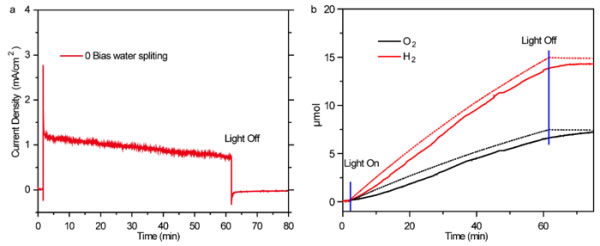Recently, the Advanced Energy Materials Engineering Laboratory of the Ningbo Institute of Materials Technology and Engineering, the Chinese Academy of Sciences has made progress in the field of hydrogen production by sunlight hydrolysis, and related results were published in the Proceedings of the National Academy of Sciences under the title of A molecular tandem cell for efficient solar water splitting on.
Hydrogen energy is an important component of clean energy in the future. Inspired by natural photosynthesis, artificial photosynthesis hydrogen production is more green and economical than other high-temperature hydrogen production methods. In artificial photosynthesis, sunlight oxidizes water and transfers redox equivalents to CO2, which ultimately reduces CO2 or protons to H2. In this reaction, water oxidation conditions are more severe, because water oxidation will sequentially lose 4 electrons and generate 4 protons, which is a slow kinetic process. On the electrode surface, the photon absorption/electron transfer initiation step usually needs to be integrated with the catalyst to achieve a short time (microsecond) to complete the water oxidation reaction, thereby avoiding the recombination of electrons and holes. Among them, the more mainstream research idea is to use semiconductor core/shell structure photoanode materials. The core-shell structure can realize the efficient transfer of electrons to assist the local charge separation between the photoanode material, the light-absorbing group and the catalyst, making the photoanode water The oxidation efficiency is greatly improved.
Although semiconductor materials have been extensively researched and applied in the field of artificial photosynthesis, from a design point of view, molecular assembly methods are more advantageous in improving the efficiency of solar energy split water cells. However, the current efficiency of solar hydrogen production based on molecular systems is much lower than that based on semiconductor materials.
Researcher Wang Degao of the Institute of Advanced Energy Materials Engineering of the Ningbo Institute of Materials Science and Technology, Professor You Wei of the University of North Carolina at Chapel Hill, and Thomas J. Meyer have carried out a joint research and reported the research on the efficient decomposition of water based on the molecular system photoelectrochemical cell/PV series cell. The tandem battery incorporates a dye-sensitized photoelectric synthesis cell (DSPEC) into an organic light-absorbing group, and uses visible light to convert water into O2 and H2. The experimental results show that the conversion efficiency of solar energy to hydrogen energy of the visible light absorption electrode is greatly improved, and provides a benchmark for the conversion efficiency of solar fuel based on molecules. Combining the DSPEC photoanode with the organic solar cell OSC, the efficiency of solar artificial water decomposition to produce hydrogen reaches 1.5%, compared with the efficiency of natural photosynthesis of only ~1%.
The research was supported by the Ningbo Top Talent Program and related projects of Zhejiang's leading innovation and entrepreneurship team.

Figure 1. Left: OSC externally connected to a DSPEC/PV series device with an external Pt cathode; right: shows the energy level design and electron transmission process of the series battery

Figure 2.a: The photocurrent signal of the gas process generated by the molecular system of the series device; b: The quantitative schematic diagram of H2 and O2 generated during the water decomposition process. The red and black lines correspond to the externally measured H2 and O2, and the black and red dotted lines correspond The integrated photocurrent over time shows the theoretical value of the gas generated from the current curve.
Refrigerator Parts,Air Cooled Condenser,Air Conditioning Condenser,Refrigerator Loop Pipe
Suzhou Green New Material Technology Co., Ltd. , https://www.glooptube.com